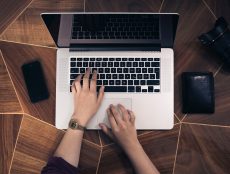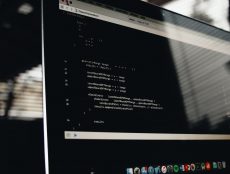
Summer is providing temporary relief from educating amid a pandemic. But this fall, communities are going to be stuck between a rock and a hard place. They need to determine how to get students back to school and learning. Districts across the U.S. are currently deciding how best to do that.
Three strategies have emerged. The first involves reopening schools and observing social distancing and other COVID-19 safety measures. The second involves continuing the remote learning that districts began this spring. The third is a combination of both. None of them are ideal.
Back to School This Fall Will No Longer Be About Maintaining Instructional Continuity
It goes without saying that the measures adopted to continue teaching K-12 classes this spring were a response to a pandemic, and not a long-term solution. Many have grown incredibly frustrated with online learning over the past months and, when learners go back to school this fall, want to avoid it at all costs.
There’s another reason to come up with an alternative to the alternative. It’s had a negative impact on student learning. While dedicated and experienced online educators can elicit similar or better learning gains compared to in-person teachers, that’s not what happened this spring. Instead, the vast body of American K-12 educators, many of whom had never taught online, had to onboard almost over night.
Researchers from Brown University estimate that, on average, students going back to school this fall will return with 63% to 68% of the learning gains that they would have logged in a normal year. When it comes to math, that figure is all the way down to 37% to 50%.
(The researchers underscore that this is a projection and it’s also not the case across the board. They believe that the top third of a given class might actually have made more gains over lock down than they would have under normal circumstances.)
Regardless, going back to school this fall will not be ‘getting back to normal.’
Opening Schools With Masks, Hand Sanitizer, and Social Distancing
This week, multiple state officials announced plans to partially or fully reopen schools this fall. Perhaps the most ambitious of these plans was put forward in Florida. On Thursday, Governor Ron DeSantis and Commissioner Richard Corcoran laid out steps and funding for a full return to in-class learning.
“We want schools fully open in the fall because there is no better way to educate our kids than have that great teacher in front of that child,” Corcoran said. “We also know that they are not at a low risk, they are at an extremely low risk, not only of contracting (COVID-19), but even spreading it. And so we’re saying, ‘Open up the schools. Let’s get the best educational environment. Let’s keep everybody safe in our educational community and now attack like no other state has before the achievement gap.’”
ICYMI: Arguing that Florida’s economy depends upon it, Gov. Ron DeSantis on Thursday unveiled a plan that expects K-12 schools to reopen in August at “full capacity.” https://t.co/kN8Mna7MXQ
— Miami Herald (@MiamiHerald) June 12, 2020
The reopening will follow recommendations laid out by the Center for Disease Control and include wearing masks, practicing physical distancing, and liberal use of hand sanitizer. This is guidance, not a mandate, and it will be up to individual communities to make the final decision on how to proceed. Click Orlando has further coverage of DeSantis’ plan.
Maintaining Remote Learning
Measures like those laid out by Governor DeSantis have alarmed some education stakeholders. These fears were compounded by the fact that Florida announced 1,419 new cases of COVID-19 on the same day that he made the announcement.
https://twitter.com/KwikWarren/status/1271411250015211522
Many communities have already decided to double down on distance learning and spend the summer training teachers and preparing.
On Monday, the Glenbrook High School District in Glenview, Illinois met to discuss going back to school this fall. They decided to kick the year off with mandatory synchronous online learning.
As the district explained in a press release, “From an instructional perspective, we believe that providing a consistent and stable learning environment is a critical element for student success. Until we are able to fully return, our approach is to provide students with an eLearning experience that mirrors as much of a normal school day as possible. We also acknowledge that there are times when our students need access to face-to-face interactions and services within the school building.”
Glenbrook plans to gradually open schools over the course of the year, but they want to prepare for the worst and have a satisfactory fallback in the event that a recurring outbreak closes schools again.
A Mix of Online, In-Person, and Blended Learning
The majority of U.S. schools want to strike a happy medium between in-person and fully online learning.
The state of Washington has exemplified this approach. On June 11, State Superintendent of Public Education Chris Reykdal issued a guidance for going back to school this fall. While he encouraged schools to experiment with returning to in-person instruction, he highlighted that districts will need a plan B.
“For some of you, in order to meet (Department of Health) requirements, your fall opening may be a hybrid face-to-face/online model or any combination of modalities and schedules that meet your local community needs,” Reykdal said in a statement. “In addition, every district will need an alternative plan to return to full continuous remote learning in the event you cannot open or a local health authority or the governor mandates a short- or long-term closure after you open. We do not expect that, but a resurgence of COVID-19 is possible if we do not collectively do our parts to limit the spread of the virus.”
The plan to reopen schools ultimately falls on the communities they educate. While American communities are currently receiving a broad spectrum of advice from state and federal government, everyone needs to inform themselves and come to the conclusion that they deem best.
Featured Image: Jeffrey Hamilton, Unsplash.









No Comments